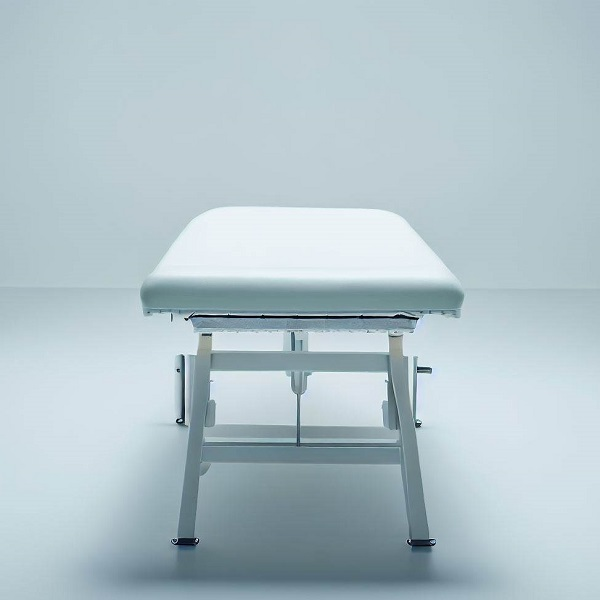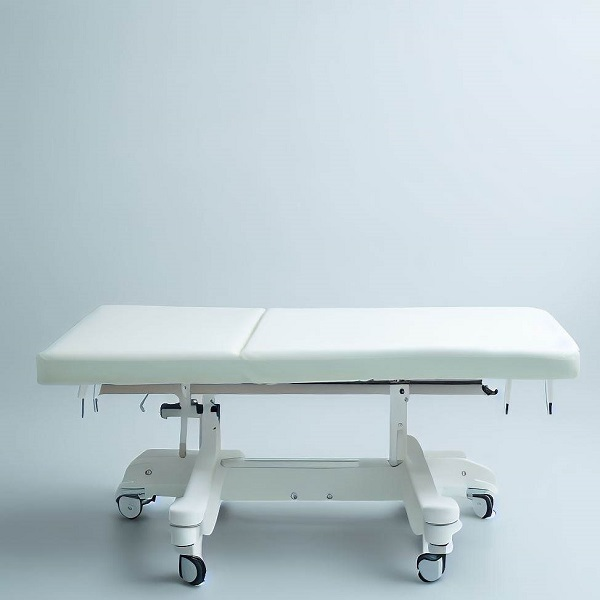Physical therapy, also called physiotherapy, involves helping individuals recover from physical injuries or disabilities. It is important to have physical therapy for people's health and well-being because it promotes movement, mobility, and overall physical function, which are crucial for daily living and hobbies.
One of the critical tools in a physical therapy practice is the treatment table. Treatment tables offer a stable and safe surface for therapy sessions, and they have adjustable treatment table allowing therapists to customize treatment to each patient's needs. They are designed to support the weight of patients while allowing for safe and effective manipulation and mobilization of their bodies. By utilizing treatment tables, physical therapists can achieve better outcomes for their patients while minimizing physical strain on themselves.
In the event of an accident, illness, or surgery that limits mobility or range of motion, a treatment table is extremely beneficial.
For instance, In 2014, the American comedian and talk show host Ellen DeGeneres underwent physical therapy to recover from a neck injury. During her sessions, she used a treatment table to perform exercises that helped her improve her neck mobility and reduce pain. Treatment tables allowed her physical therapist to adjust the angle of her neck and spine, which then helped Ellen perform her therapeutic exercises without hurting herself further.
Moreover, treatment tables come with various features that promote safety and comfort during physical therapy sessions. For example, Patients can lie comfortably on most tables and maintain their position throughout their session by adjusting the armrests, the headrest, and the cushion. Physical therapists can also adjust the table's height, incline, and tilt to accommodate different therapeutic exercises and patient needs.
The basic function of treatment tables in physical therapy is to allow physical therapists to provide quality care to patients while ensuring their comfort, safety, and well-being.
The use of treatment tables not only promotes the safety and comfort of patients, but also enables them to achieve better results. Patients can perform their exercises on them with a stable surface, allowing therapists to focus on guiding them through proper form and technique without hurting themselves.
Treatment tables also come in different sizes, shapes, and styles to accommodate various physiotherapy practices. Some tables are specifically designed for manual therapy techniques such as joint mobilization, stretching, and myofascial release. Other tables feature attachments such as bolsters, straps, and wedges that help adjust the position of the patient.
Moreover, treatment tables come in handy when patients need to work on their balance, coordination, and strengthening after an injury or surgery. Tables with adjustable height and incline make it easier for patients to perform standing exercises, balance training, and core strengthening exercises. Patients with limited mobility can also use tables to perform leg and arm exercises without putting too much pressure on their joints or muscles.

The use of treatment tables in therapy sessions can provide a number of benefits for both patients and therapists, such as:
e. Safety features: Treatment tables are typically designed to be safe and secure, with features such as adjustable straps to prevent patients from falling or slipping during their session. They also tend to have smooth, rounded edges to minimize the risk of injury. Overall, the use of treatment tables in therapy sessions can provide a stable, safe, and comfortable surface for both patients and therapists, allowing for more effective treatments and better patient outcomes.

Various medical devices used by therapists today offer adjustable features that enable customization of treatment according to each patient's unique needs. These devices can be programmed to deliver different levels of therapy, based on factors such as the patient's condition, age, gender, severity of the condition, and overall health.
The advantages of using adjustable medical devices for treatment are many. Firstly, customized treatment plans often result in better patient outcomes, faster recovery times, and improved quality of life. Secondly, customized treatments allow therapists to provide the right amount of therapy without overdoing it, reducing the risk of injury or negative side effects.
For example, a patient undergoing physiotherapy may be provided with a device that allows the therapist to adjust the amount and frequency of electrical stimulation they receive according to their body's response. This type of device offers more control and flexibility than traditional non-adjustable devices that can deliver electrical stimuli at a predetermined rate or intensity.
Another example is Laser therapy, which has adjustable features that enable therapists to control the wavelength, duration, power output, and mode of delivery of the laser beam. By changin these parameters, they can target specific tissues and cells, customize the treatment plan to the patient's needs, and achieve optimal therapeutic outcomes.
Additionally, adjustable devices enable therapists to monitor the patient's response to treatment with greater accuracy and make adjustments as necessary. For instance, a compression therapy device used to treat lymphedema may have adjustable pressure settings that can be fine-tuned based on the patient's individual response to treatment. This could be done by measuring the circumference of the affected limb, and pressure can be increased or decreased based on the readings.
Adjustable features also make it possible for therapists to better track patient progress and provide feedback on the effectiveness of treatment. Devices such as electronic range-of-motion machines and gait-training robots can record and analyze data on the patient's mobility, and the therapist can use this information to tailor the treatment plan to the patient's specific needs.
Lastly, patients with certain conditions may experience changing healthcare needs over time, and adjustable medical devices can accommodate these changes. For example, patients with chronic pain may require adjustments in pain management over time, and a device that allows for customized settings can make these changes more easily and accurately.
In conclusion, adjustable features in medical devices allow therapists to tailor treatment plans to the unique needs of each patient, resulting in improved outcomes, reduced risk of injury, and better patient progress tracking. By using devices with adjustable features, therapists can provide more effective treatment and help their patients achieve better health outcomes.
Treatment tables are an essential tool in physical therapy and rehabilitation. A treatment table is a specially designed table that is used for the physical examination and treatment of patients who suffer from a variety of musculoskeletal conditions or injuries. One of the main benefits of a treatment table is that it makes it easier for patients to stay in the correct position during therapy.
Staying in the correct position during therapy is very important as it allows the therapist to properly assess the patient's condition and provide targeted treatment. It also helps to prevent injury and discomfort to the patient. Using a treatment table, the patient can be positioned in a way that allows the therapist to target the affected area precisely.
The design of treatment tables is such that they provide stability, support, and comfort to patients, which helps them stay in the correct position during therapy. The tables are usually made of high-quality materials, such as steel, aluminum, or wood, which offer excellent strength and stability. They are also designed to accommodate different body types and sizes, and can be adjusted to provide maximum comfort and support.
Adjustable treatment table can be raised or lowered to suit the patient's needs. This is particularly important when working with patients who have limited mobility, as it makes it easier to position them for treatment. The adjustable sections can also be angled to provide better access to specific areas of the body, which makes it easier for the therapist to provide treatment.
Another feature of treatment tables that makes it easier for patients to stay in the correct position is the use of straps and supports. These are used to secure the patient in place and ensure that they are positioned correctly. They can be adjusted to provide the right level of support and comfort, and are usually made of soft materials that do not cause irritation or discomfort to the patient.
The use of treatment tables also makes it easier for therapists to provide manual therapy to patients. The tables provide a stable surface for patients to lie on, which makes it easier for therapists to apply pressure and manipulate soft tissue and joints. The tables can also be adjusted to allow the therapist to work at a comfortable height, which reduces strain on the therapist's back and neck.
There are also specialized treatment tables that are designed for specific types of therapy. For example, there are inversion tables that are used to treat spinal conditions such as herniated discs and sciatica. These tables allow the patient to be positioned upside down, which helps to decompress the spine and reduce pressure on the nerves. There are also traction tables that are used to stretch and realign the spine, and massage tables that are used for soft tissue manipulation.
In conclusion, using treatment tables makes it easier for patients to stay in the correct position during therapy. The stability, support, and comfort provided by these tables allow patients to relax and focus on their treatment, which is essential for a successful outcome. The use of straps and supports ensures that patients are positioned correctly and safely, which reduces the risk of injury. The adjustable treatment table allows therapists to provide targeted treatment and manual therapy, which is crucial for effective rehabilitation.
Overall, treatment tables are an essential tool in physical therapy and rehabilitation, and are highly effective in helping patients achieve their treatment goals.